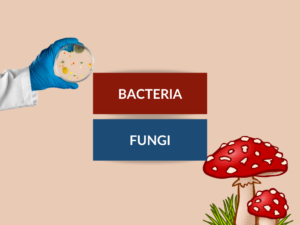Bacteria vs. Fungi: Exploring the Key Differences
Welcome to our comprehensive article on the differences between bacteria and fungi! In this piece, we will explore the characteristics, examples, and uses of both bacteria and fungi. By the end, you will have a clearer understanding of the unique properties of these two fascinating microbial groups. Let’s dive in!
What are Bacteria?
Bacteria are single-celled microorganisms that belong to the prokaryote domain. They are among the most abundant organisms on Earth and can be found in various environments. Bacteria can have different shapes (such as rods, spheres, or spirals) and can exist as both beneficial and harmful types.
Examples of Bacteria
Some common examples of bacteria include:
- Escherichia coli (E. coli)
- Staphylococcus aureus
- Streptococcus pneumoniae
- Lactobacillus acidophilus
Uses of Bacteria
Bacteria serve various essential functions in nature and human activities. Some common uses of bacteria include:
- Food fermentation, such as in yogurt and cheese production
- Bioremediation of environmental contaminants
- Production of antibiotics
- Nitrogen fixation in the soil
What are Fungi?
Fungi are a diverse group of eukaryotic organisms that include yeasts, molds, and mushrooms. Unlike bacteria, fungi are multicellular and contain a nucleus. They play crucial roles in ecosystems and have a significant impact on human life, aiding in decomposition and nutrient recycling.
Examples of Fungi
Some common examples of fungi include:
- Aspergillus
- Penicillium
- Candida
- Trichophyton
Uses of Fungi
Fungi have several important applications in our lives. Here are some common uses of fungi:
- Production of antibiotics like penicillin
- Bread, beer, and wine fermentation
- Bioremediation of pollutants
- Source of enzymes for industrial applications
Differences between Bacteria and Fungi
Now, let’s explore the key differences between bacteria and fungi in the table below:
| Difference Area | Bacteria | Fungi |
|---|---|---|
| Cellular Structure | Prokaryotic cells | Eukaryotic cells |
| Nuclear Presence | No true nucleus | True nucleus |
| Cell Wall Composition | Peptidoglycan or lipopolysaccharides | Chitin or cellulose |
| Presence of Membrane-bound Organelles | Absent | Present |
| Reproduction | Asexual and sexual | Asexual and sexual |
| Mobility | Motile or non-motile | Mostly non-motile |
| Nutrient Intake | Can be autotrophic or heterotrophic | Heterotrophic |
| Size | Smaller (microscopic) | Larger (macroscopic) |
| Role in Decomposition | Decompose organic matter | Primary decomposers |
| Pathogenicity | Some species are pathogenic | Some species are pathogenic |
Conclusion
In summary, bacteria and fungi are two distinct groups of microorganisms with fundamental differences in their cellular structure, reproduction, metabolic processes, and ecological roles. Understanding their distinctions is crucial for comprehending their respective functions in nature and their impacts on human life.
People Also Ask
Here are some common questions readers might have about bacteria and fungi:
Q: Are bacteria and fungi the same thing?
A: No, bacteria and fungi are two separate groups of microorganisms with different cellular structures and genetic makeup.
Q: Can bacteria and fungi cause diseases in humans?
A: Yes, certain bacterial and fungal species can be pathogenic and cause infections in humans, although not all of them are harmful.
Q: Are all bacteria and fungi microscopic?
A: Yes, bacteria and certain fungi are microscopic, while other fungi can be macroscopic, such as mushrooms.
Q: Can bacteria and fungi be beneficial to humans?
A: Absolutely! Bacteria and fungi have numerous beneficial uses, including contributions to food production, antibiotic manufacturing, and bioremediation.
Q: Can bacteria and fungi live in extreme environments?
A: Yes, both bacteria and fungi are resilient and can survive in extreme habitats, such as hot springs, deep-sea hydrothermal vents, and Antarctic ice.


